Category Archives for Garmin
TeamX Builder Spotlight: Back in the Pilot’s Seat
Flying plays an interesting role in each of our lives. For
some it’s a career and a way of life. For others it’s more of a hobby or pastime.
No matter what role it takes, there are occasionally times when it gets pushed
to the bottom of the priority list. That was the case for Garmin TeamX engineer
Bob Godsy. After earning a private pilot license in high school, flying would
take a backseat to raising a family, managing a career and life in general over
the next 30 years. But it was his career developing avionics that helped get
him back into flying. In fact, he wanted to use the same avionics he helped
design in an airplane that would perfectly fit his needs. So after a 30-year flying
hiatus, he decided to get back in the pilot’s seat and build the aircraft that
would fulfill his needs.
The Experimental Route
Each prospective aircraft owner has a mission. For some
getting from point A to point B as fast as possible is priority No. 1. Others
may be willing to sacrifice a little speed for the ability to endure rugged
backcountry landings. Whatever is most important, owners must evaluate several
factors — such as overall performance, cost of ownership and ergonomics, just
to name a few — when selecting the ideal aircraft.
Aircraft upkeep is another major consideration. Whereas
type-certificated aircraft require A&P certified mechanics to perform
maintenance and authorized inspectors to perform annual inspections, experimental-/amateur-built
aircraft benefit from more relaxed regulations. In many cases, builders can
perform most of these maintenance and inspection tasks themselves.
Experimental-/amateur-built aircraft also offer the
flexibility to customize. Avionics, engine and propeller options can be
tailored to fulfill those mission requirements … and in an essentially
brand-new airframe. Experimental builders also benefit from an intimate
understanding of the aircraft they regularly fly. They know it down to the very
last rivet.
“For me the mission and cost of owning an experimental
airplane far outweighed the cost of buying a type-certificated aircraft. And
building an airplane played well into my skills and perseverance,” Bob said.
A few key elements in his aircraft decision: good cruise
performance, economical fuel burn and side-by-side seating. Why side-by-side? So
he could easily visit with his wife in the cockpit.
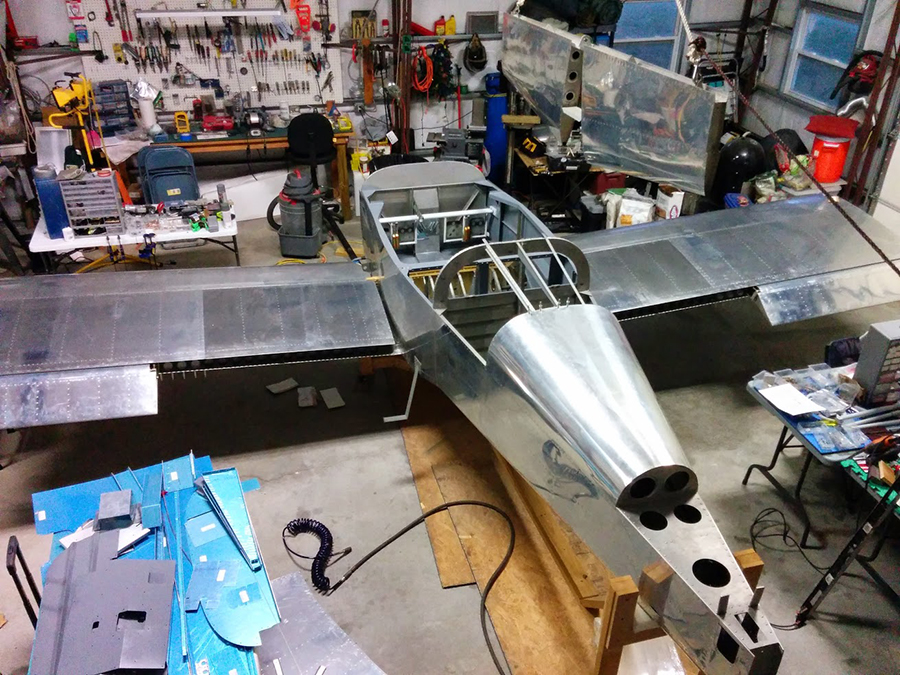
Building the Vans Aircraft RV-7A
“At the time, the RV-7A fit my mission best. A lot of Vans aircraft have been built and it’s arguable that based on the number of airframes flying, they are just as safe as type-certificated aircraft,” Bob explained.
With nearly 2,000 RV-7/7A aircraft completed to date, it’s
become a stalwart in the experimental aircraft category. And after five years,
it was ready to fly.
“I purchased a quick-build project and worked mostly on the weekends.
It was very hard to work a full-time job, add aircraft ratings and build an
airplane,” he explained. And as with any major project, there were especially
difficult challenges. “The fiberglass work was very tedious. But it is a new
skill, and I have used it outside of building an airplane,” he added.
To meet his avionics needs, Godsy installed two 10.6-inch G3X Touch flight displays, a GTN 650 GPS/NAV/COMM/MFD, G3X autopilot, G5 electronic flight instrument, GMA 245 audio panel and GTR 200 comm radio.
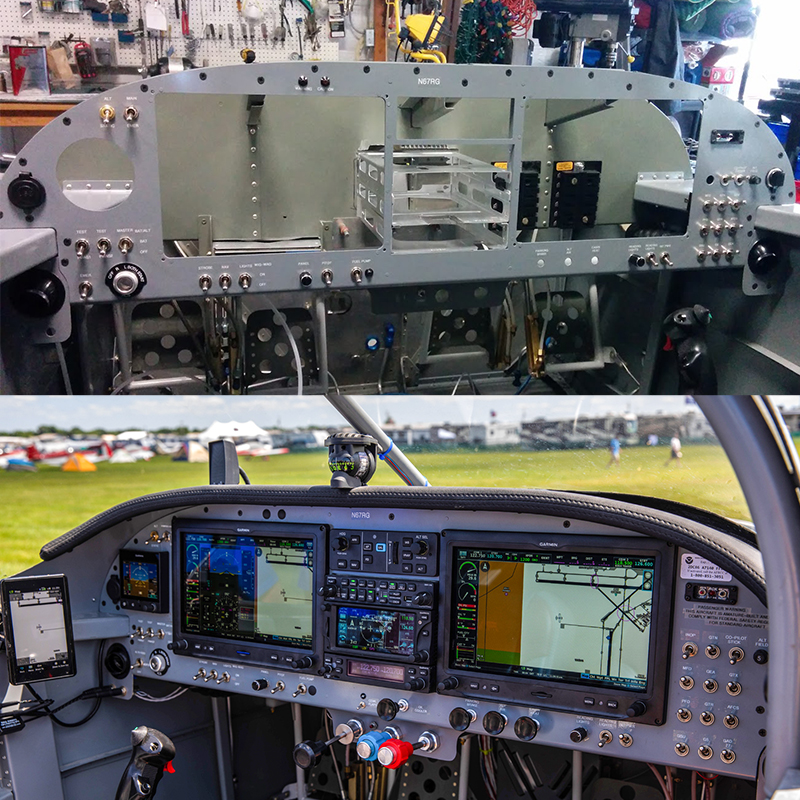
Avoiding Burnout
No one likes to think about it, but project burnout happens.
“For me the end goal kept me going,” Bob said. “Flying regularly and working on
additional pilot ratings kept the love flying at the forefront making me want
an airplane of my own even more.”
Keeping the project close to home, or even at home, can help
too. A long commute to and from the workshop can hinder motivation.
“Having the project in the garage outside my house was
paramount to limiting the additional effort required to get work done. Plus, my
wife could visit me anytime, so it wasn’t like I was gone and away. I just kept
working on it every week and it became a habit I looked forward to,” Bob added.
A Builder’s Advice
So what does it take to build an experimental aircraft? It
starts with inspiration, a dash of drive and the motivation to create an
airplane tailored specifically for your needs.
“Work on the project every week. Make it a habit. You will
enjoy the results when you are finished,” he said.
And if you’re looking for the best place to start or need
some guidance along the way, just ask your friends, or check out your local EAA
chapter.
“We have a number of people building RVs at Garmin. They are a great resource, equivalent to a good EAA chapter. I discussed issues directly with the TeamX members and they were very helpful, even changed my mind on a number of occasions … in the end you will own an airplane and it is a real “time machine” — it saves you time — and it’s fun.”
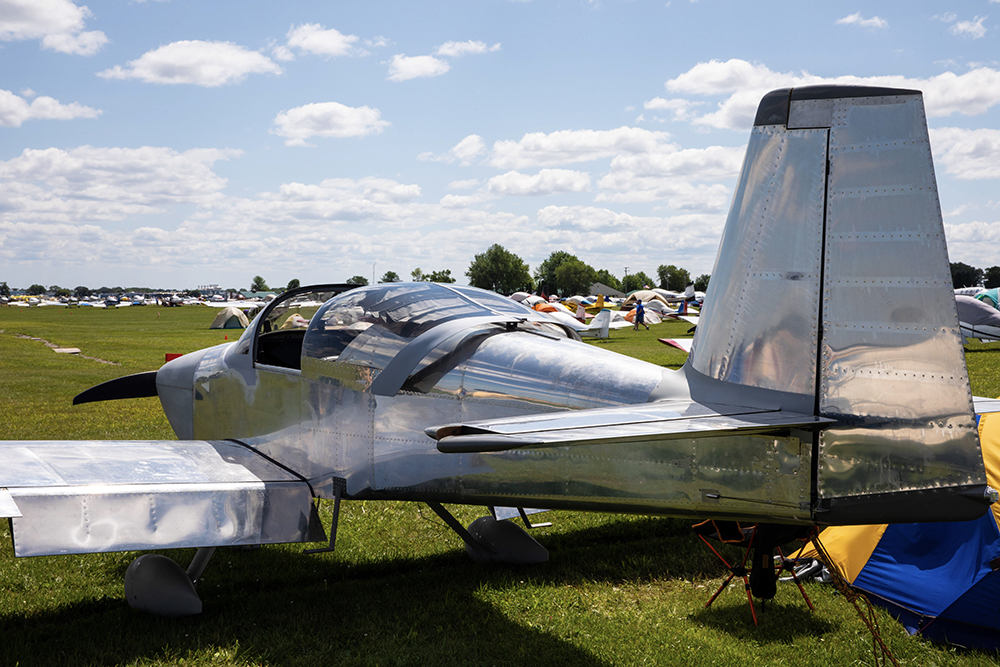
The post TeamX Builder Spotlight: Back in the Pilot’s Seat appeared first on Garmin Blog.
https://www.garmin.com/en-US/blog/aviation/teamx-builder-spotlight-back-in-the-pilots-seat/
Clearance Delivery Phone Numbers and Where to Find Them
Good news! The FAA has made filing IFR flight plans easier.
They recently completed a modernization effort eliminating the need to contact Flight
Service to activate a flight plan. Before, flight plans needed to be relayed
through the Flight Service “middleman” in locations where ATC could not be
directly contacted — such as a non-towered airport. Now the FAA has developed a
network of clearance delivery phone numbers pilots can call to activate an IFR
flight plan from more remote airports before getting airborne. It is meant to
expedite the clearance delivery process and reduce the chance for errors.
These new clearance delivery phone numbers are now published
within the FAA Chart Supplements. Our team has incorporated these documents natively
into not only our FltPlan.com, FltPlan Go and Garmin Pilot apps, but also many
of our popular avionics solutions, such as the GTN 650/750, GPS 175/GNX 375/GNC
355 navigators, G1000 NXi and more. It’s an easy and convenient way to find
these phone numbers when preparing for a flight. Plus, on your smartphone, you
can even select directly from the FltPlan.com, FltPlan Go and Garmin Pilot apps,
and dial out to clearance delivery representatives who can help activate an IFR
flight plan. We’ve even taken convenience one step further if your aircraft is
equipped with one of our audio panels enabled with BLUETOOTH technology — such
as the GMA 345 or GMA 350 series. Pilots can wirelessly pair a compatible
smartphone running one of our apps to select headsets and call clearance
delivery straight from the cockpit.
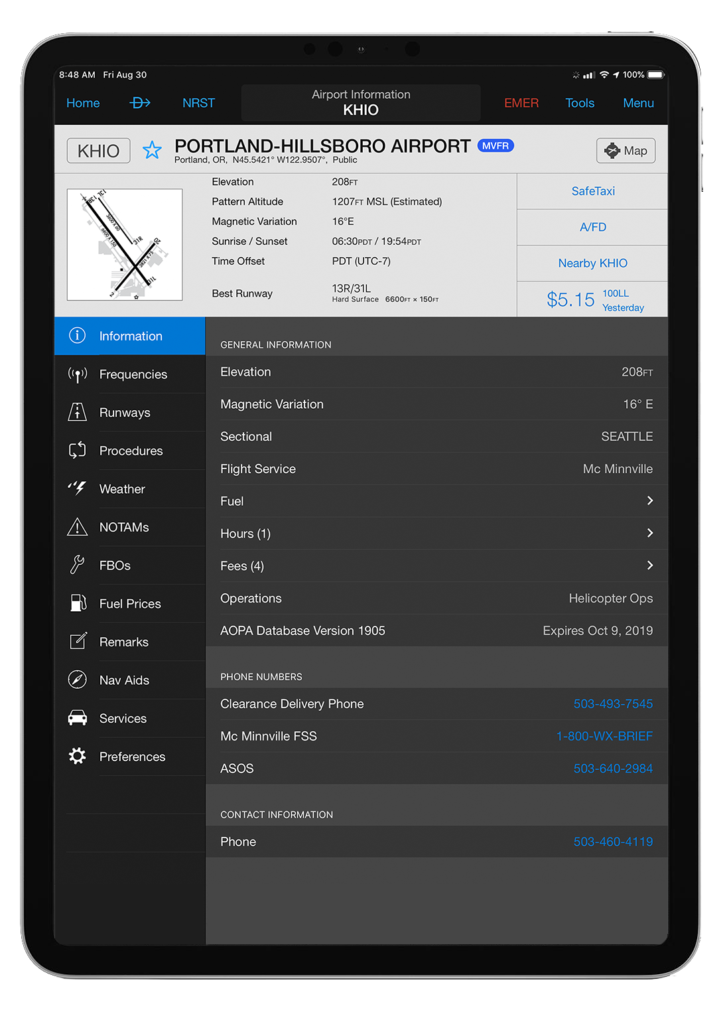
Finding Clearance Delivery Phone Numbers
Clearance delivery phone numbers can be found within many of
our avionics solutions or portable devices that feature the AOPA Airport
Directory. This includes FltPlan.com, FltPlan Go, Garmin Pilot, aera 660, TXi
series flight displays, G1000 NXi and more. On Garmin Pilot from your
smartphone, simply select Airport Info, then Information. The
applicable clearance delivery phone number will be listed in the Phone
Numbers section. Clearance delivery phone numbers are only available at
non-towered airports where ATC cannot be directly reached via radio.
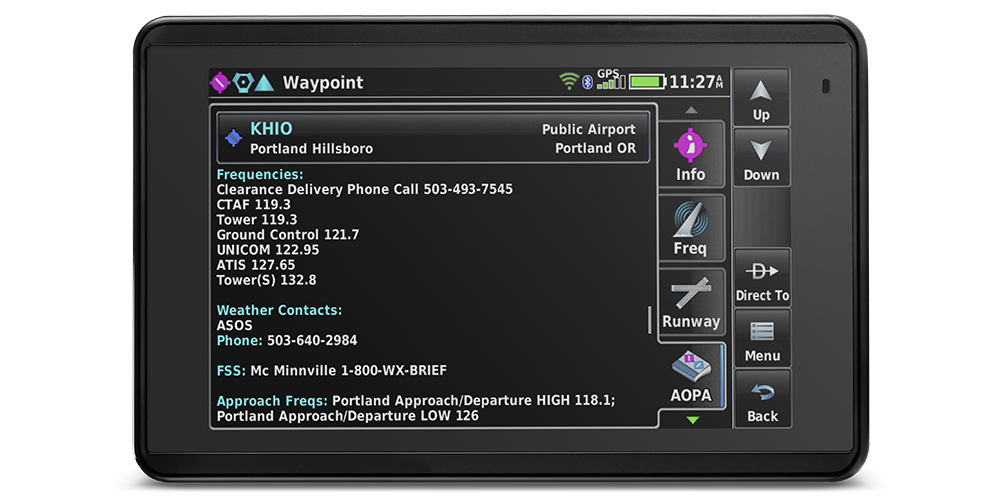
For additional information about clearance delivery phone
numbers and Garmin aviation products, please contact our award-winning product
support team at fly.garmin.com/support.
The post Clearance Delivery Phone Numbers and Where to Find Them appeared first on Garmin Blog.
https://www.garmin.com/en-US/blog/aviation/clearance-delivery-phone-numbers-and-where-to-find-them/
FltPlan.com: Safety Management System
Business aviation is booming. According to the General
Aviation Manufacturing Association, business jet sales are on the rise. Corporate
flight departments will continue to grow and the number of flights and flight
hours within the business aviation fleet will continue to climb. With these
growing figures comes the mounting need for robust systems to help maintain a
high level of safety and efficiency. Our FltPlan.com Safety Management System
(SMS) services were designed to help flight departments, fleets and aircraft
operators promote and maintain a safety-focused culture on multiple levels and
to help manage any risks that may arise with flight operations.
Why SMS?
The FAA is emphasizing the importance of safety-focused
decision making. A robust SMS establishes processes, methods and
decision-making approaches for each individual within a flight department — including
aircraft technicians, pilots and management — to not only help foster a
safety-focused culture, but also to create procedural efficiencies that result
in cost savings.
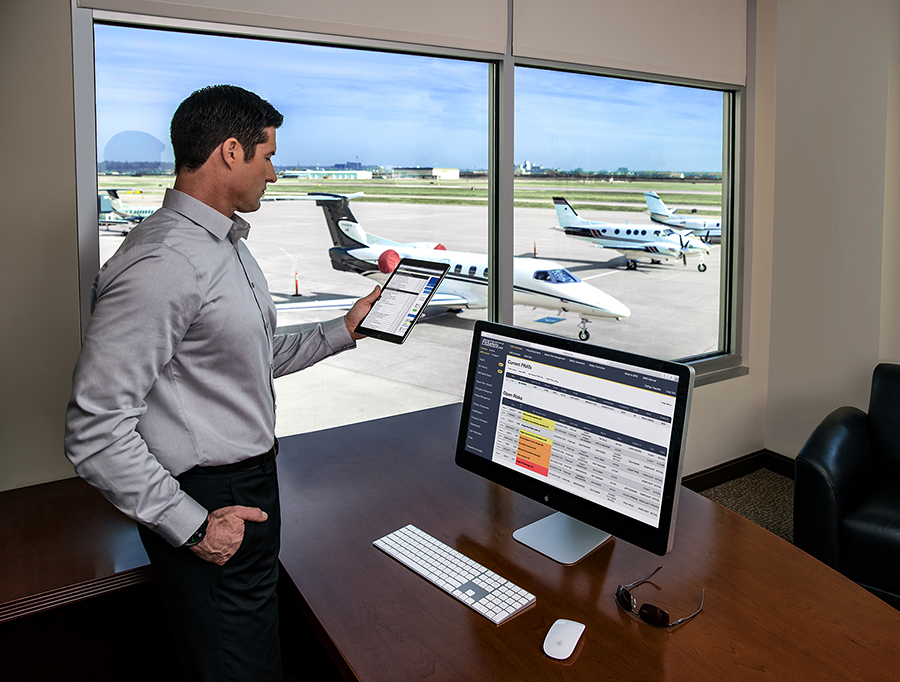
FltPlan.com SMS
Our SMS premium services within FltPlan.com provide flight departments with the tools needed to comply with the requirements of FAA Advisory AC120-92a, ICAO and IBAC’s IS-BAO. It easily blends with your FltPlan account to allow easy entry and retrieval of weather briefings and flight risk assessment tools (FRATs) to help make better-informed decisions throughout the organization. Additionally, all records and documents within the FltPlan.com safety management system can be stored on our secure servers, be accessed online by everyone on your team or shown to inspectors anywhere in the world.
Features
- Written and online documentation of implementing
compliant SMS for your company - Guidance on use of ICAO/FAA/IS-BAO-compliant
templates - An SMS compliance certificate for each aircraft
in your fleet - Dashboard showing FRATs, open risks, Special
Messages and training notices - Individual account and dashboard for each
user/employee - Supports multiple FltPlan user accounts in one
SMS system - Fully accessible by company employees without
FltPlan accounts - Automatic email notification to top management
when a new accident, incident or hazard is reported - Ability to notify various levels of the company
based on department - Uploading of all SMS-related documents including
policies, manuals, checklists, photos, etc. - Records of all past risks, selectable by
department, issue, status and date range - Ability of management and auditors to perform
internal/external audits of the SMS system - Expert SMS phone and email support
Flight Risk Assessment Tool (FRAT)
Every flight has a certain degree of risk. Factors such as
time of flight, weather conditions and recent crew workload can affect the
level of risk on any given flight. Our FRAT is designed to help evaluate the
risk level and make an informed decision. The FRAT features include:
- Full integration with FltPlan.com flight plans
- Customizable hazards and hazard values
- Automatic notification of manager and/or chief
pilot when a flight exceeds the predetermined risk limit - Communication to the pilot with approval or
recommendations for lowering high FRAT scores - Option to include notes with FRAT
- Archiving of FRATs for future auditing
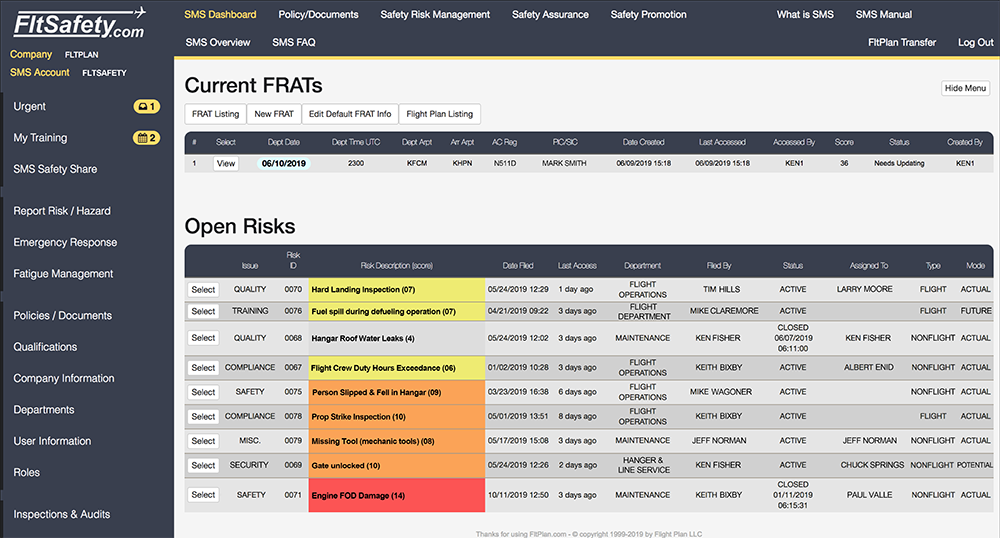
When it comes to the decision-making process, information is paramount. FltPlan.com SMS services can help your flight department manage, maintain and evaluate this information in a user-friendly and convenient way. These FltPlan.com services are designed for every member within an organization, not just pilots and management. For more information about SMS and FltPlan premium services, visit FltPlan.com/aboutus.
The post FltPlan.com: Safety Management System appeared first on Garmin Blog.
https://www.garmin.com/en-US/blog/aviation/fltplan-safety-management-system/
GFC 500 & GFC 600—Safety-Enhancing, Cost-Reducing Technology
Autopilots have been around nearly as long as aircraft themselves. For decades, they have been assisting pilots by reducing workload on long flights and helping to precisely navigate approaches. The fundamental concept of an autopilot remains the same: to automatically provide pitch, roll and yaw forces without the pilot touching the flight controls. What’s changed in the time since the first modern autopilot is the system itself — how it works and the hardware it uses to generate those pitch, roll and yaw forces. Our engineers have reimagined the general aviation autopilot system using modern technology plus design elements from our GFC 700 autopilot, a popular solution found in thousands of business aircraft, and created the GFC 500 and GFC 600 digital autopilots available for retrofit on thousands of general aviation aircraft.
A motor with enhanced reliability, lower operating costs
The autopilot’s automatic control inputs are carried out by
servo motors installed alongside an aircraft’s control surface mechanisms.
Traditionally, these servos are powered by brushed motors—designs powered
through brushes with a tendency for contact wear over time. Because of this
anticipated wear, servos require regular maintenance or overhaul intervals—sometimes
as little as every few hundred hours costing thousands of dollars.
In order to improve the long-term performance, reliability
and operating costs of our autopilots, we designed the servos for our GFC 500
and GFC 600 with brushless DC motors. These contactless motors result in a powerful
servo with fewer inspection requirements, reduced maintenance costs, and aircraft
downtime.

Smart technology in a smart servo
Traditional autopilot servos typically contain fail-safe
design elements such as a mechanical slip clutch or shear pin to ensure pilots
can always overpower an autopilot and take control of the aircraft. A variety
of factors, including fatigue, can cause a shear pin to break, necessitating a repair.
While mechanical slip clutch and shear pins are in place for fail-safe
purposes, they can require constant adjustment or repair.
In our GFC 500 and GFC 600 autopilot servos, we eliminated
the need for mechanical slip clutches and shear pins altogether. Instead, our
servos incorporate a feature that decouples the motor drives when the autopilot
is turned off or disengaged, providing virtually no control system friction.
That way, pilots can easily hand-fly or override the system without fighting
the controls. And, each servo is monitored by its own built-in microprocessor, providing
the “smart” logic to significantly improve sensor performance, response and
self-monitoring capabilities. A truly smart, digital solution with potentially safety-enhancing
and cost-reducing benefits in the long run.
A growing Approved Model List (AML)
The approved model lists for the GFC 500 and GFC 600
continue to grow. To date, dozens of legacy aircraft are eligible for these
retrofit autopilot solutions. The GFC 500—tailored for light single-engine
piston, fixed-wing aircraft—is ready to be installed on many popular Cessna,
Beechcraft, Piper aircraft and more. The GFC 600—designed for
higher-performance single- and twin-engine piston and turbine aircraft—is
available for select Cessna and Beechcraft aircraft, with many more coming
soon.
For more information about the GFC 500 and GFC 600 autopilots, visit our website at garmin.com/aviation.
The post GFC 500 & GFC 600—Safety-Enhancing, Cost-Reducing Technology appeared first on Garmin Blog.
https://www.garmin.com/en-US/blog/aviation/gfc-500-gfc-600-safety-enhancing-cost-reducing-technology/
Record Crowds Descend on EAA AirVenture Oshkosh 2019
For a week that was preceded by torrential rainstorms and
flooding, causing saturated aircraft parking areas and uncertainty among
pilots, the 2019 edition of EAA AirVenture Oshkosh generated the best
attendance in the event’s long history. Approximately 642,000 people and more
than 10,000 aircraft attended the event, marking the 50th year it
was held in Oshkosh, Wisconsin.
There was just as much excitement at our display along Celebration Way. The exhibit featured four aircraft: a G500 TXi-equipped Cessna 182, a G3X Touch-equipped Van’s Aircraft RV-8, another Cessna 182 equipped with our G3X Touch for certificated aircraft, and ambassador Mike Patey’s legendary DRACO — a highly modified turboprop Wilga featuring our TeamX G3X Touch avionics for experimental aircraft.
Inside our exhibit, our latest avionics technology generated just as much buzz, ranging from our new GSB 15 USB charger and GNC 355 GPS/Comm radio to new features for our popular G5 electronic flight instrument and G3X Touch flight displays for experimental aircraft.
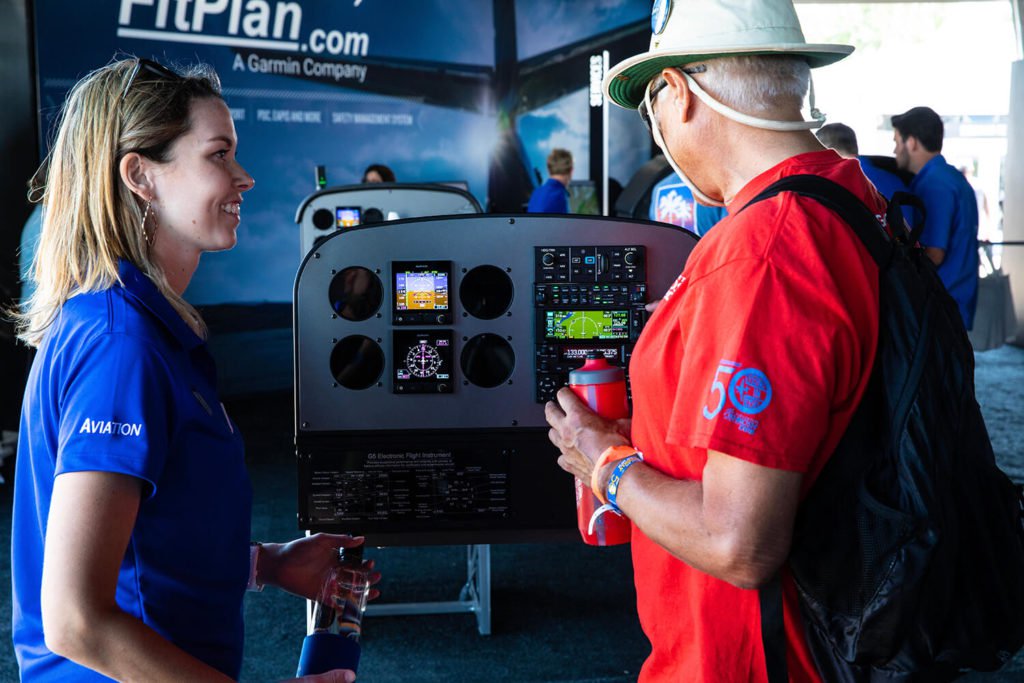
Seminars and Pilot Training
Each day our avionics experts and training team educated hundreds of aircraft owners and pilots on our latest technology. They hosted numerous seminars and courses tailored to different aircraft types and aviators. Our G3X Touch Academy taught amateur aircraft builders the ins and outs of installing our avionics in experimental aircraft, and we hosted hands-on GTN 750/650 series pilot training courses using real avionics and real-world scenarios. Plus, our team presented daily seminars showcasing our latest avionics solutions — everything from Garmin Pilot and ADS-B to the latest upgrade avionics like our GFC 500/GFC 600 retrofit autopilots and G500 TXi/G600 TXi touchscreen flight displays. If you didn’t have a chance to attend, we’ve got you covered. We regularly host regional seminars, and training courses throughout the United States, as well as an online webinar series covering our product line. Check out our schedule to find one near you!
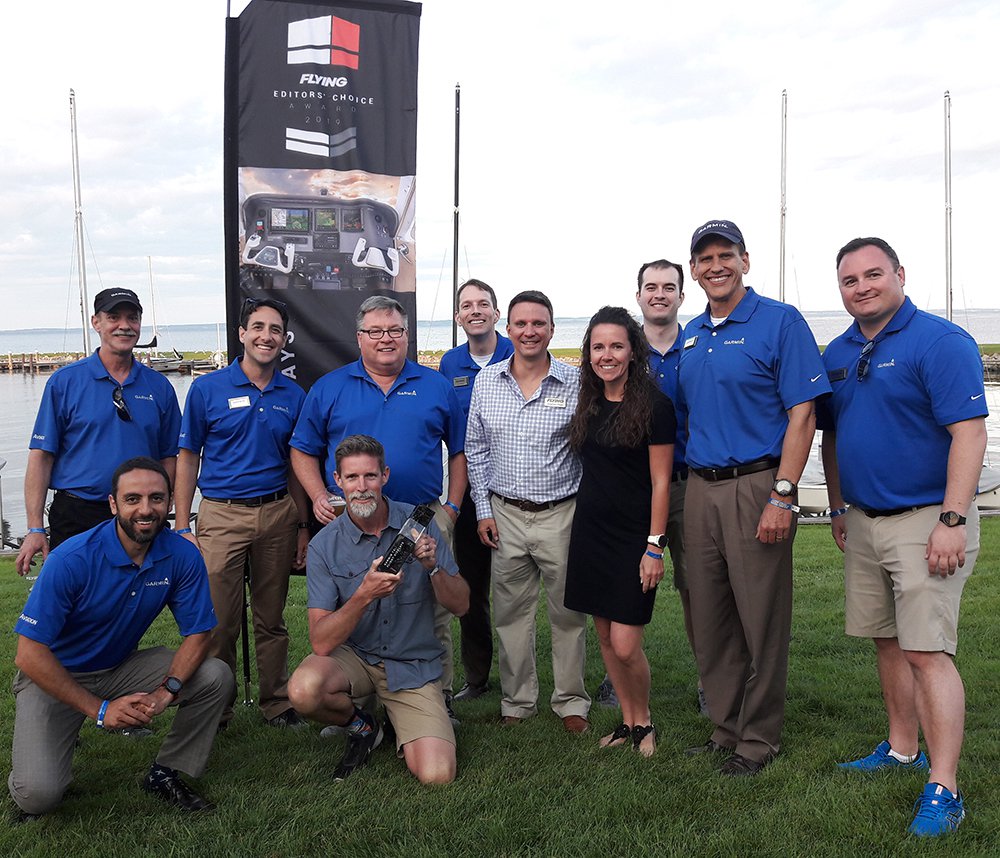
Ambassador Trent Palmer: STOL Demos
Garmin Ambassador Trent Palmer made his way to Oshkosh in his G3X Touch-equipped Kitfox “Freedom Fox.” The STOL (short takeoff and landing) competitor participated in STOL demonstrations on the AirVenture ultralight runway, delighting crowds to landings and takeoffs measuring tens of feet rather than hundreds.
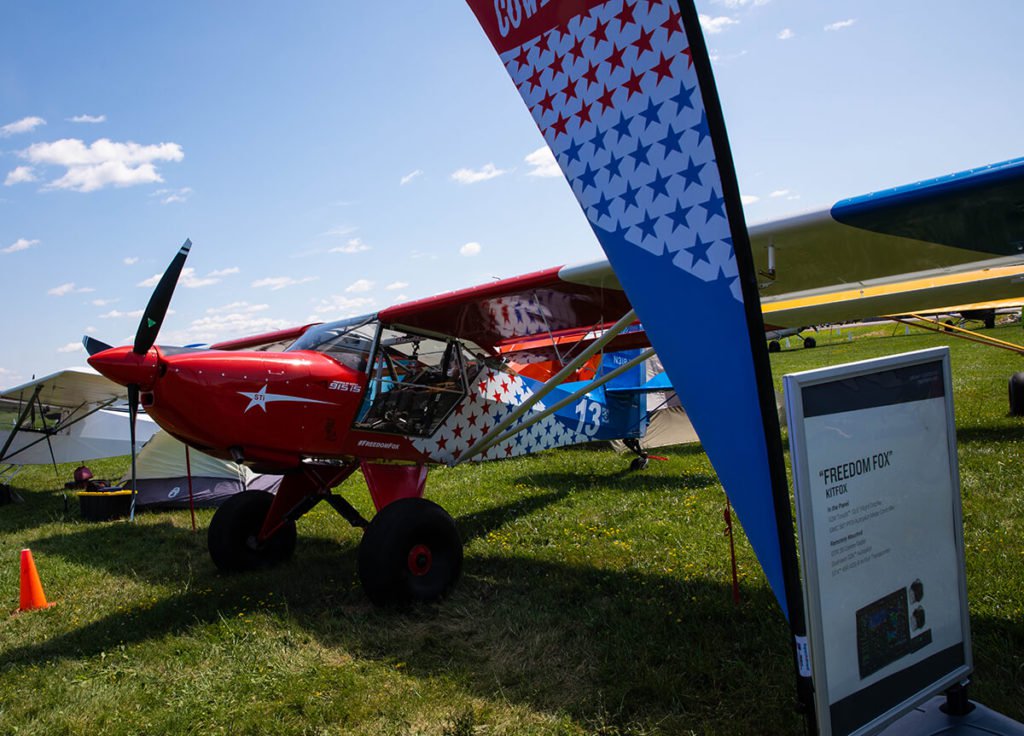
Mike Patey and DRACO: Fan Favorites
Adults and kids alike couldn’t help but stop and stare at the creation guarding the entrance to our exhibit. The one-of-a-kind aircraft DRACO created by Garmin Ambassador Mike Patey invited a steady crowd throughout the week. This STOL record-breaking aircraft has gained a reputation as one of the best performing aircraft in its category. Patey took time to visit with fans, take pictures and sign autographs. DRACO temporary tattoos and stickers could be seen all over the airshow grounds as he delighted his fans with free swag.
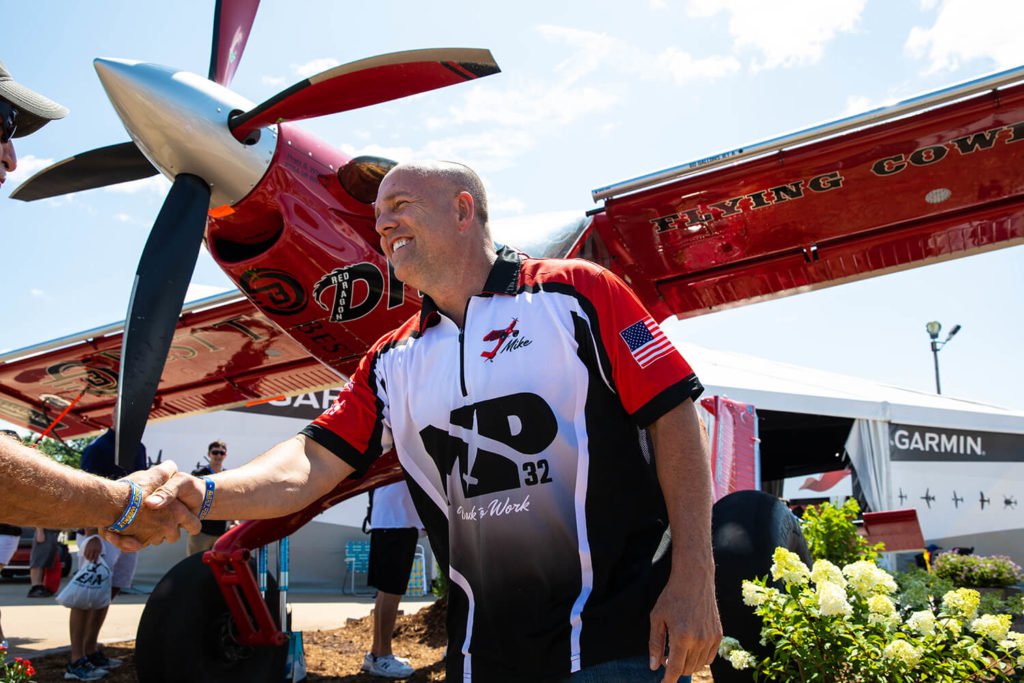
One Week Wonder
One year after the EAA’s One Week Wonder Van’s Aircraft RV-12iS went from a box of parts to a flying aircraft in only seven days, the airplane was once again on display along Celebration Way. A stunning paint job highlighted the Garmin-equipped aircraft, featuring volunteers’ names scribed on the wings. This project represents a beacon for current and future amateur aircraft builders, demonstrating what can be accomplished in the kitplane arena.
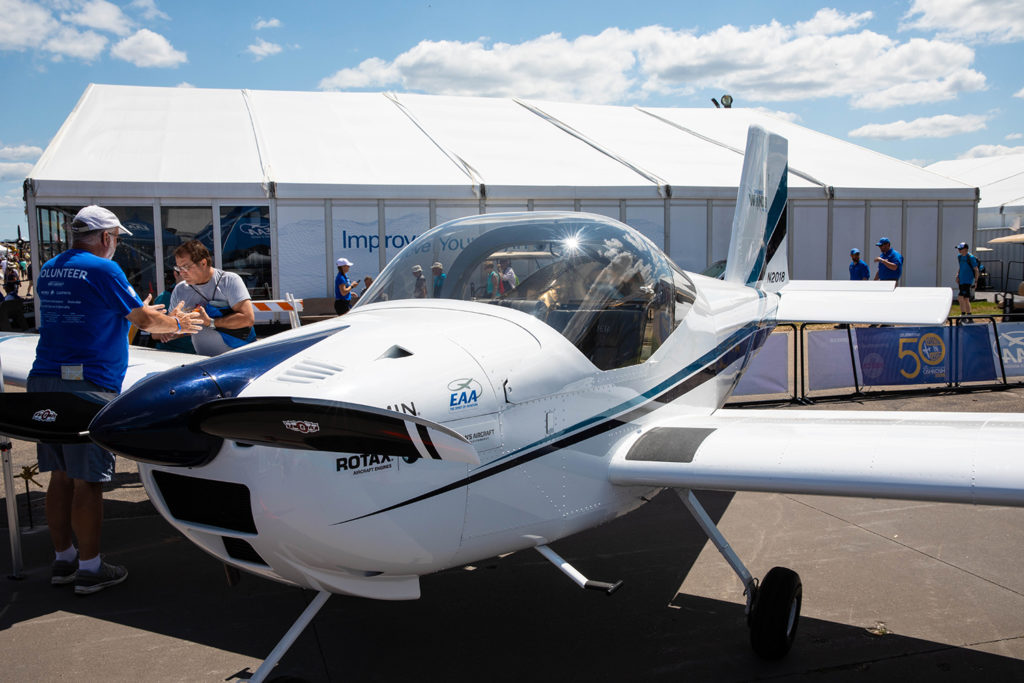
Thank you to all of our loyal customers and fellow aviation enthusiasts for visiting with us! We’re already counting the days to EAA AirVenture Oshkosh 2020, so stay tuned for our latest announcements, news and stories. Follow us on Facebook, Twitter and Instagram and tag your Garmin-inspired pictures with @GarminAviation and #flyGarmin!
The post Record Crowds Descend on EAA AirVenture Oshkosh 2019 appeared first on Garmin Blog.
https://www.garmin.com/en-US/blog/aviation/record-crowds-descend-on-eaa-airventure-oshkosh-2019/
Garmin Pilot: Expanded FltPlan.com Integration and Features
Our Garmin Pilot team introduced new enhancements and features within the aviation app, highlighted by expanded FltPlan.com integration including pre-departure clearances (PDCs) and the ability to submit Electronic Advance Passenger Information System (eAPIS) manifests. Additionally, route suggestions and optimized routings are now available on FltPlan.com and can be viewed within Garmin Pilot. For our European users, Garmin Pilot incorporates a robust VFR data set including airport traffic patterns, entry routing lines, TMZ/RMZ airspaces and more. Pilots flying IFR can manually enter or edit a route in Garmin Pilot for validation and filing via EuroControl.
FltPlan.com Premium Service Integration
Flight plans can now be seamlessly synchronized between Garmin Pilot and FltPlan.com. With Garmin Pilot version 9.7, pilots with subscriptions to PDCs and eAPIS from FltPlan.com can use these premium services within Garmin Pilot.
To get started:
- Enter your FltPlan.com credentials from the FltPlan.com home screen main menu icon,
or by selecting FltPlan.com in Settings - Import your FltPlan.com Pilot and Aircraft profiles
into Garmin Pilot
Remember that all flight
plans created or changed on FltPlan.com will automatically be synchronized with
Trip Planning in Garmin Pilot.
- After modifying a trip in Garmin Pilot, select
Save or File to send the changes to FltPlan.com - FltPlan.com flight plans may be activated in
Garmin Pilot
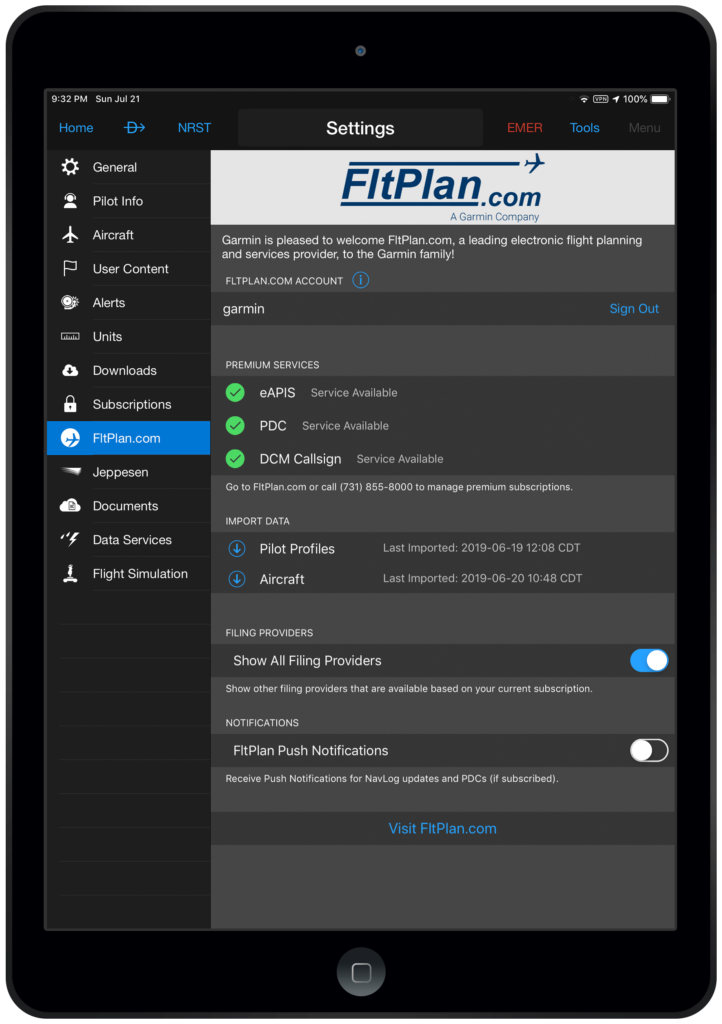
Pre-Departure
Clearances*
Pre-departure clearances (PDCs) are text clearances issued for an IFR flight plan available at over 70 airports in the United States. A PDC is the same as receiving a verbal clearance from Clearance Delivery.
PDCs include:
- Filed Route
- Amendments to your route
- Cleared Altitude
- Transponder code
- Departure Frequency
- Any Special instructions
For flights
departing from airports where PDCs are available, Garmin Pilot will display the
pre-departure clearance 20 to 30 minutes before the scheduled departure time.
PDCs are available
from:
- Trip Planning Page
- Detailed
PDC will be displayed
- View the
decoded route and associated notes in its entirety
- Select either:
- Confirm
& Activate Decoded Route
- Activate
Original Filed Route
- Confirm
- Once
confirmed, the PDC will appear at the top of the Trip Plan
- Detailed
- Map Page in Split Screen Mode
- Select FltPlan.com
from the Split Screen Selector Guide
- Tap PDC
to view the pre-departure clearance
- Select FltPlan.com
- Notification on the home screen of your iPad.
- Tap the
notification to open the Trip Planning page
- Tap the
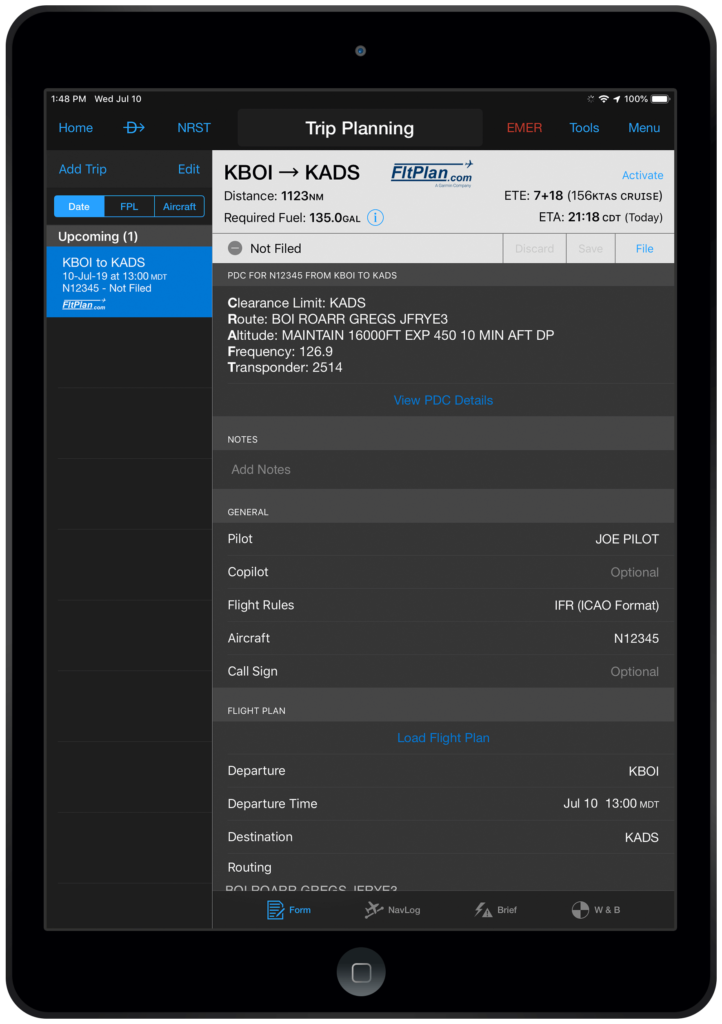
Electronic
Advance Passenger Information System (eAPIS)*
Garmin Pilot allows users
with an eAPIS premium service from FltPlan.com to enter and upload passenger
and crew manifests to Customs and Border Protection.
For flights
departing from the United States to Canada, Mexico and the Caribbean, a message
will appear on the Trip Planning page in Garmin Pilot to notify users that a
manifest is required.
- Tap eAPIS and select Create/Modify
Manifest - Enter the appropriate passenger and crew information
as you would on FltPlan.com - Choose Submit to upload the
information to Customs and Border Protection
Once the manifest
has been successfully submitted, a confirmation message will appear on the Trip
Planning page.
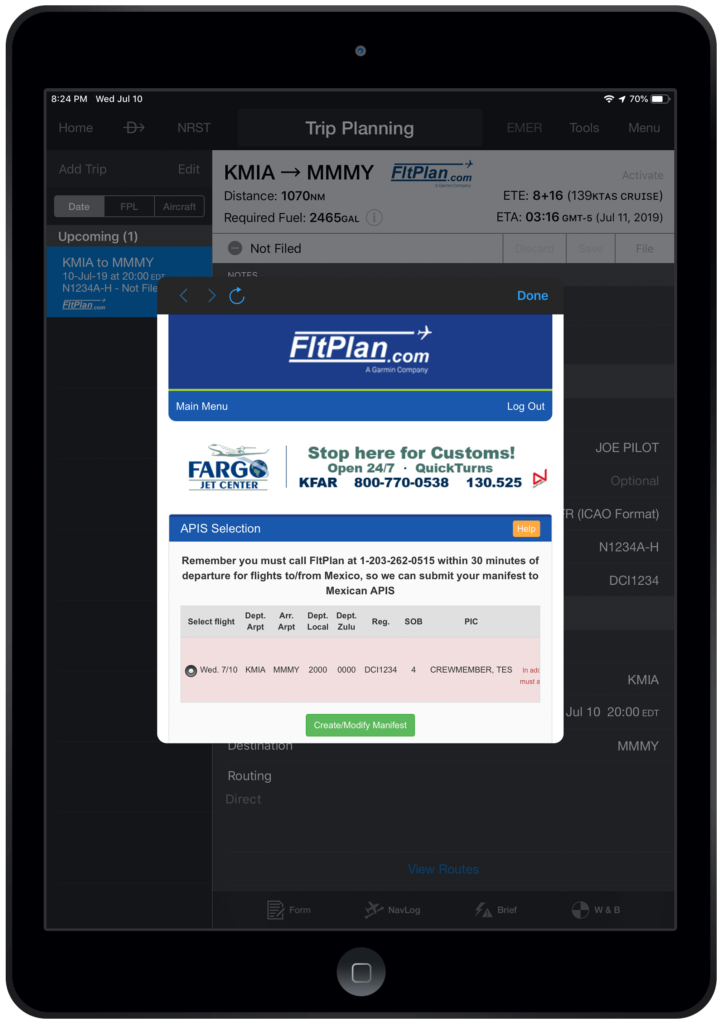
Route Suggestions
& Optimized Routing
FltPlan.com route
suggestions and optimized routing are available in Garmin Pilot, by:
- Selecting View Routes from the Trip
Planning Page - Choose either Preferred Routes to view
the route suggestions or Optimized Routes
*Note: PDCs and eAPIS are premium service subscriptions available from FltPlan.com. To learn more, select the “Premium Services” tab on FltPlan.com.
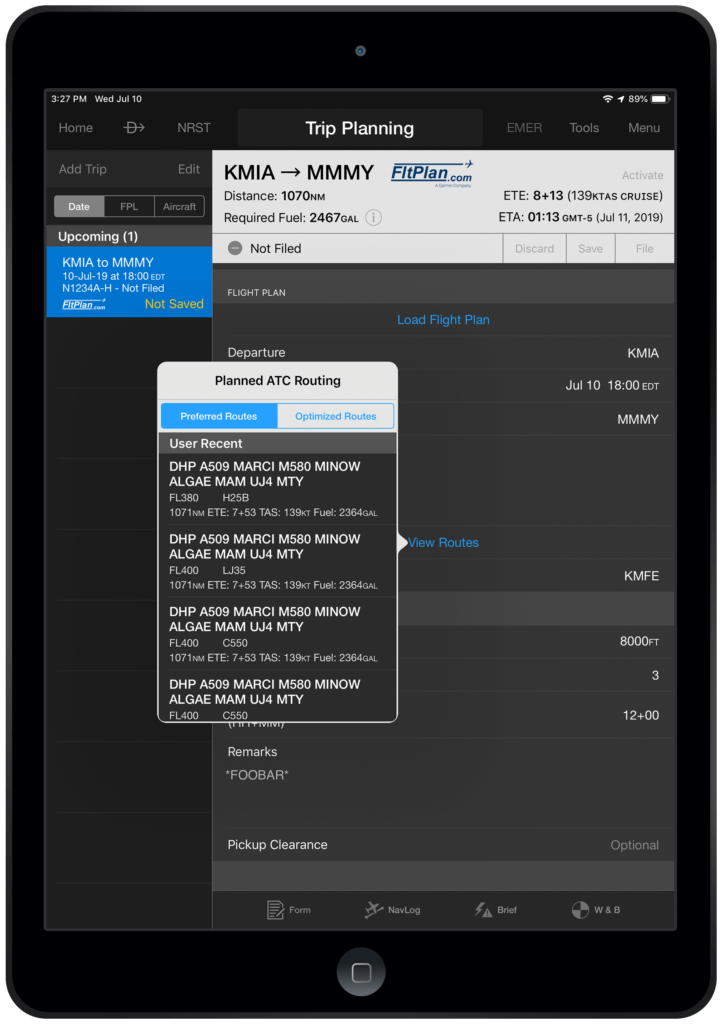
Widget Display Enhancements on Moving Map
When using the
radial menu on the moving map, the widgets may now be moved to allow pilots to
easily view airspaces, airport information, weather and more.
European VFR Data
To support the unique needs of VFR pilots flying the Europe, Garmin Pilot
incorporates VFR navigation data, including:
- Airport Traffic Patterns
- Airport Entry Routing Lines
- Enroute Holding Patterns
- FIS areas and frequencies
- TMZ/RMZ airspaces
- Nature Conservation Areas
- General Purpose Airspace
- Avoid Overflying Areas
VFR data may be displayed on the Garmin dynamic maps by selecting VFR
from the map layer icon on the Map page.
Note: European
VFR navigation data is available with the Garmin Pilot Europe Standard and
Worldwide Premium subscriptions.
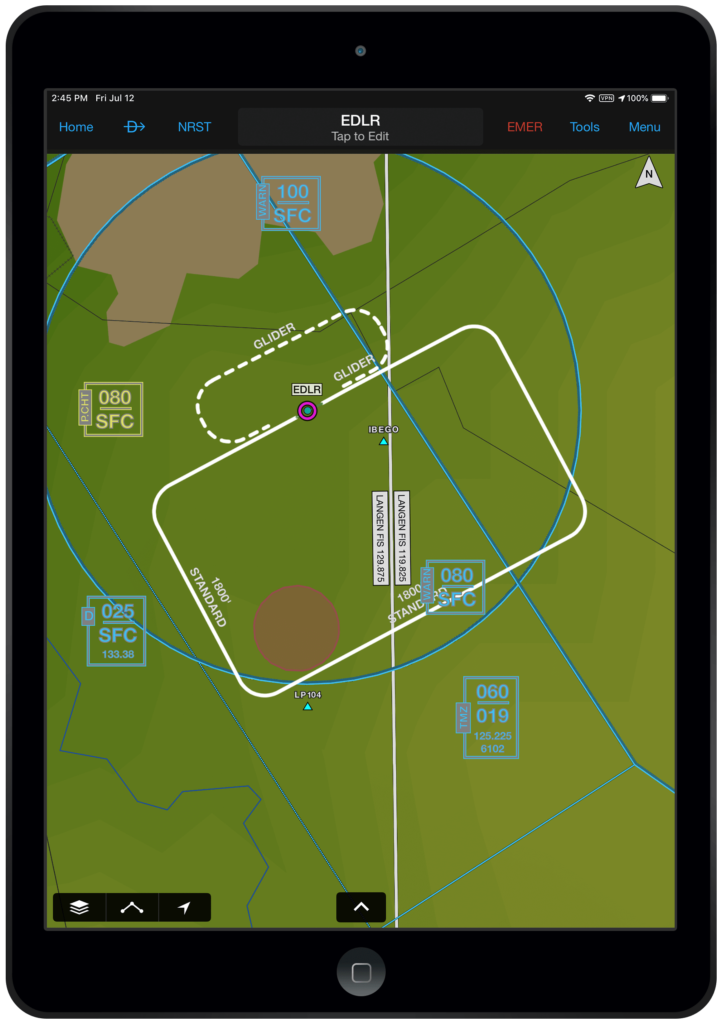
European IFR Autorouting Improvements
The European IFR autorouting feature
has been enhanced to allow pilots to manually enter or edit a route in Garmin
Pilot for validation and filing via EuroControl.
- From the Trip Planning Page, select Autoroute
- Tap Enter Manual IFR Route to input the desired routing
- Choose Autoroute
Note: European
IFR Autorouting is available with the Garmin
Pilot Europe Premium Add-on and Worldwide Premium subscriptions.
Support for GNC 355 GPS Navigator
We recently announced the GNC 355 GPS navigator with LPV approach capabilities and a 10W Comm radio for Part 23 Class I/II and experimental/amateur-built aircraft.
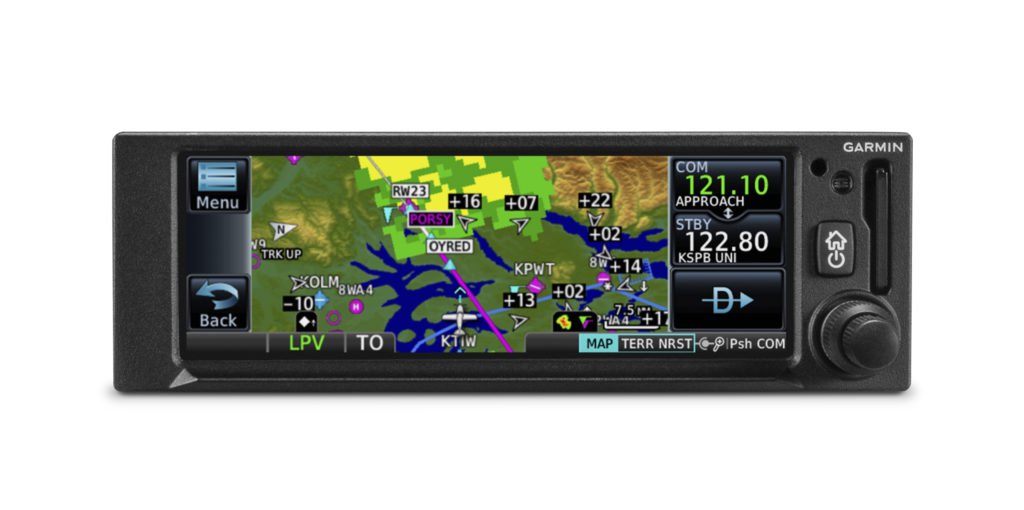
The GNC 355 wirelessly transfers flight plans and streams weather, traffic, GPS position and backup attitude via built-in Connext technology to Garmin Pilot.
For more information about Garmin Pilot and FltPlan.com visit our website, garmin.com/aviation.
The post Garmin Pilot: Expanded FltPlan.com Integration and Features appeared first on Garmin Blog.
https://www.garmin.com/en-US/blog/aviation/garmin-pilot-expanded-fltplan-com-integration-and-features/
DRACO—A Bush Plane Reaching New Extremes
If airplanes were ranked by celebrity status, DRACO would be near the top. Throughout EAA AirVenture Oshkosh 2019, fans and aviation enthusiasts flooded the Garmin exhibit to get an up-close look at the celebrated STOL (short takeoff and landing) aircraft and visit with its creator, Mike Patey. Each day he greeted airshow attendees with his trademark smile and friendly personality, while taking pictures, signing autographs and talking all things aviation with his supporters.
The concept: reaching new heights
Mike’s idea for DRACO began as a way to take his family on
backcountry adventures in their home state of Nevada. “I’ve always wanted to be
able to take my family into the backcountry at a really high elevation. I live
in a high mountain desert; we have mountain elevations that are over 14,000
feet. And I just couldn’t find a plane that could go up to 14,000 feet with a
density altitude of near 17,000, and land with camping gear and four people,”
Patey said. “So DRACO was an idea from owning a Wilga 10 years earlier. I wanted
to take a plane I loved with great visibility and a lot of neat characteristics
and make it exactly what I wanted for a backcountry extreme bush plane.”
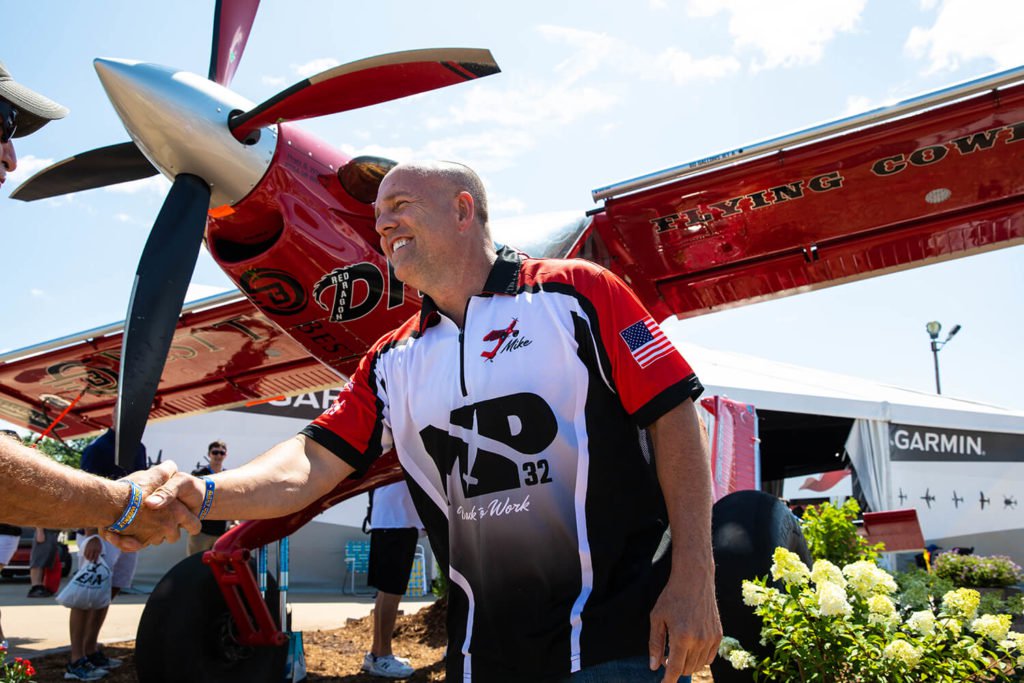
The aircraft started as a PZL-104 Wilga, originally built in
2008. Then in 2018, after Patey decided to build his extreme bush plane, DRACO
was born. “It took me 5 months and 3 weeks to build DRACO. I worked on it every
day, mostly evenings. I still had to work a day job, so it was a hard push but
worth every bit of it,” he added.
DRACO’s performance is unprecedented. Powered by a Pratt
& Whitney PT6A-28, this behemoth harnesses 680 horsepower, a top speed of
205 miles per hour, a 180 miles per hour cruise speed (while sipping just 28
gallons per hour) and a stall speed of only 35 miles per hour. 160 gallons of Jet
A allow DRACO to cover 1,000 miles. For takeoff it only needs 78 feet of runway;
for landing, only 97 feet. And a climb rate of 4,200 feet per minute renders most
obstacles insignificant.
Capable avionics for a capable aircraft
DRACO has a Garmin-equipped cockpit. It features dual 10.6-inch G3X Touch flight displays, a GTN 750 GPS/Nav/Comm/MFD, GMC 507 autopilot mode controller, and G5 electronic flight instrument as a standby. Behind the scenes, Mike remote-mounted a GTR 20 comm radio, a three-axis G3X autopilot, GMA 245R BLUETOOTH audio panel, GTX 45R ADS-B “In” and “Out” transponder, and a GDL 51R SiriusXM satellite datalink.
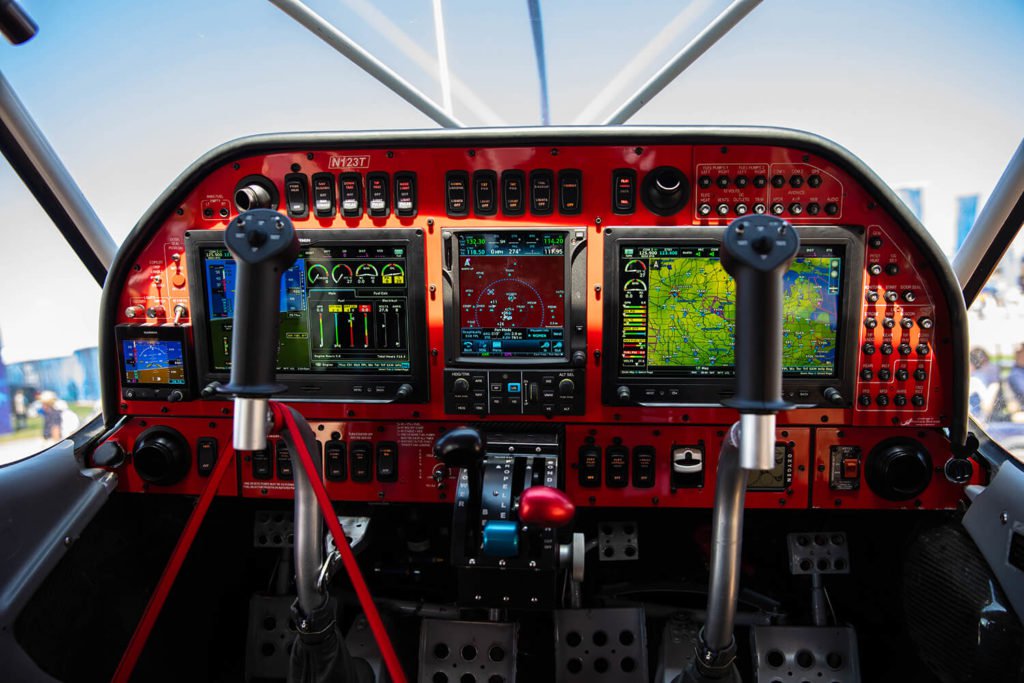
“I love everything about the G3X Touch. It’s just
user-friendly. I have to admit I’ve never looked at a manual. I just started
playing with it and then found there a several different ways to get to what I
want, from different screens. That’s what made me fall in love with it. I’ve
had several G3X Touches and hands down I think it’s the greatest piece of
equipment in aviation,” he said. “The fact that every function I want is there,
and even if I don’t know how to find it, I know within a button or two I’m
going to find it. It’s quick, it’s accessible, it’s easy to read, it’s amazing.
It’s just intuitive — that’s the best thing about it.”
Never one to rest on his laurels, Patey is already eyeing
his next aviation creation. “The next project is “Scrappy” — a radical
backcountry bush plane with 500 horsepower and crazy suspension. It’s gonna be
a lot of fun … it’s a really extreme aircraft build, but it’s perfect for me,”
he said.
Making a dream a reality
Envisioning, engineering and achieving completion of an
experimental aircraft is always a monumental undertaking — especially one the
scale of DRACO. But no prospective builder should shy away from the challenge.
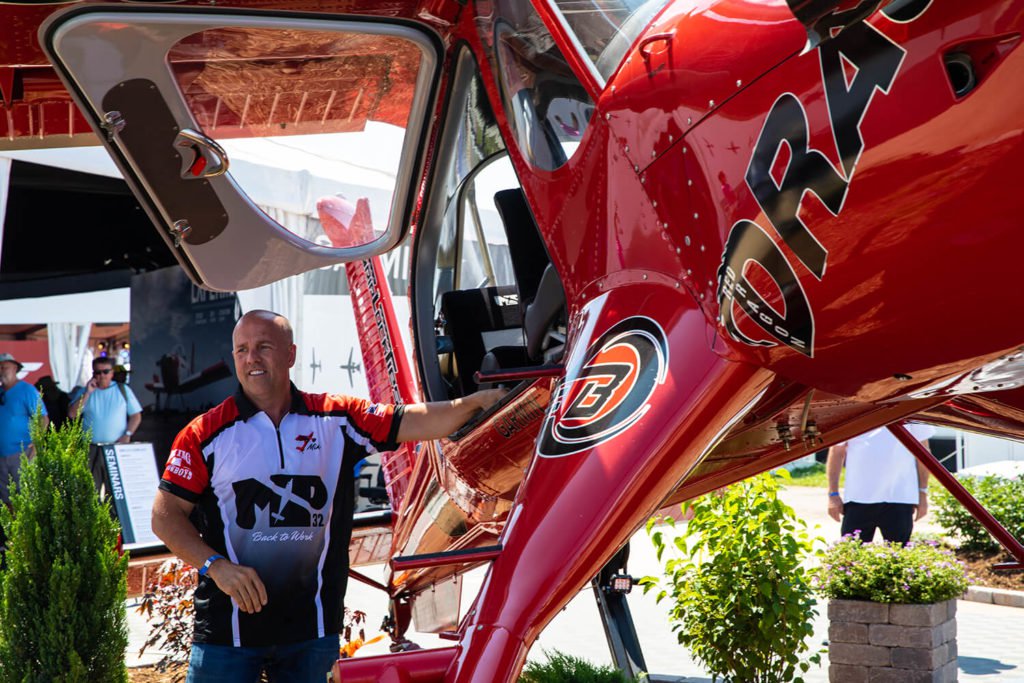
“Just go do it,” Patey said. “Stop talking about it with
your friends and pick up a tool and get to work on it. If it’s building a plane,
just start, and every day do something … I force myself to do something on my
plane every day, even if that means I sit in bed before I go to sleep, and I
order a part or a tool or some resin or something I might need. If you’re
aspiring to be a pilot? Just go to the airport and watch airplanes land. You’re
gonna fall in love. Then the first time you get two inches off the ground, it’s
over. You’re gonna love it.”
Mike Patey is a Garmin-sponsored ambassador. Follow his future builds and aviation adventures with the Flying Cowboys on YouTube and Instagram.
The post DRACO—A Bush Plane Reaching New Extremes appeared first on Garmin Blog.
https://www.garmin.com/en-US/blog/aviation/draco-a-bush-plane-reaching-new-extremes/
EAA AirVenture Oshkosh 2019 with Trent Palmer
Aviation is experiencing a backcountry boom. Bush flying has become increasingly popular as more pilots are equipping themselves and their aircraft for remote aviation adventures. Garmin ambassador and STOL (short takeoff and landing) competitor Trent Palmer is one of the many reasons backcountry aviation has become so popular. He gave us insights into his patriotically-painted Kitfox, his trip to EAA AirVenture Oshkosh 2019, and his upcoming aviation adventures.
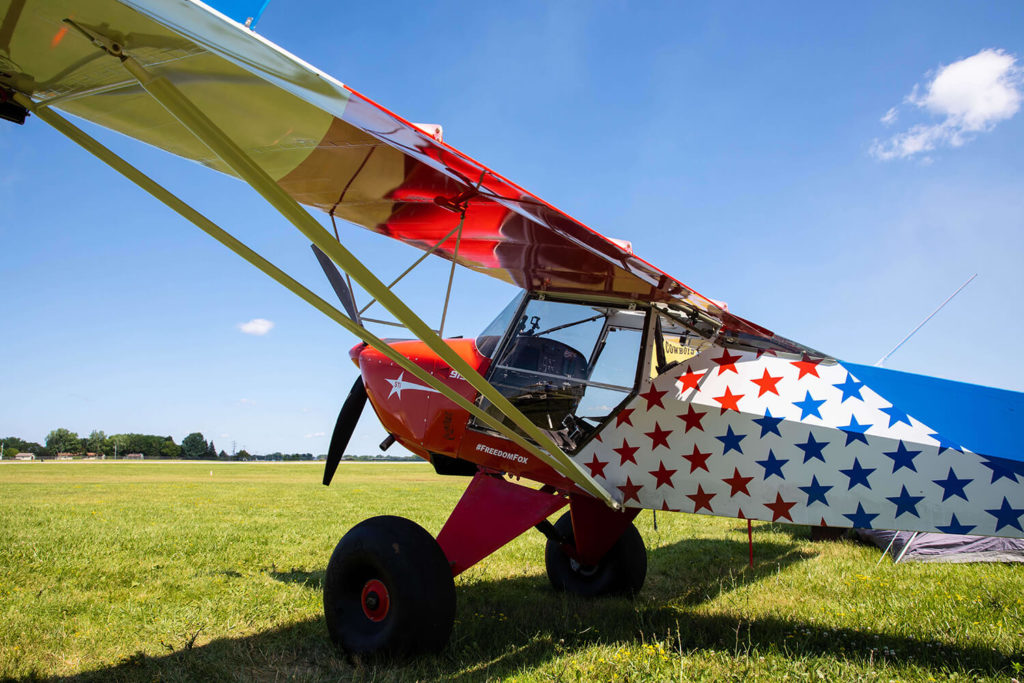
“We spent six days getting here. We went from Reno, Nevada, all the way into Rawlins, Wyoming — more than 700 miles with some slow planes … the next day was into Lincoln, Nebraska, a hot one and long one. Then from there we went to Madison, Wisconsin, and hung out there for an extra day for the Rock the Ramp party,” Palmer said. “We then popped over to the Wisconsin Dells … and from there we flew past Oshkosh over to New Holstein for the Super Cub fly-in. A bunch of the guys we were with did the STOL demo, and then we went right into Oshkosh.”
Last October, Trent upgraded his Kitfox—nicknamed FreedomFox—with a Rotax 915is engine, an MT propeller, and our G3X Touch flight display, G3X autopilot for experimental aircraft and GMC 507 autopilot mode controller. He also uses several VIRB Ultra 30 action cameras to capture his backcountry adventures.
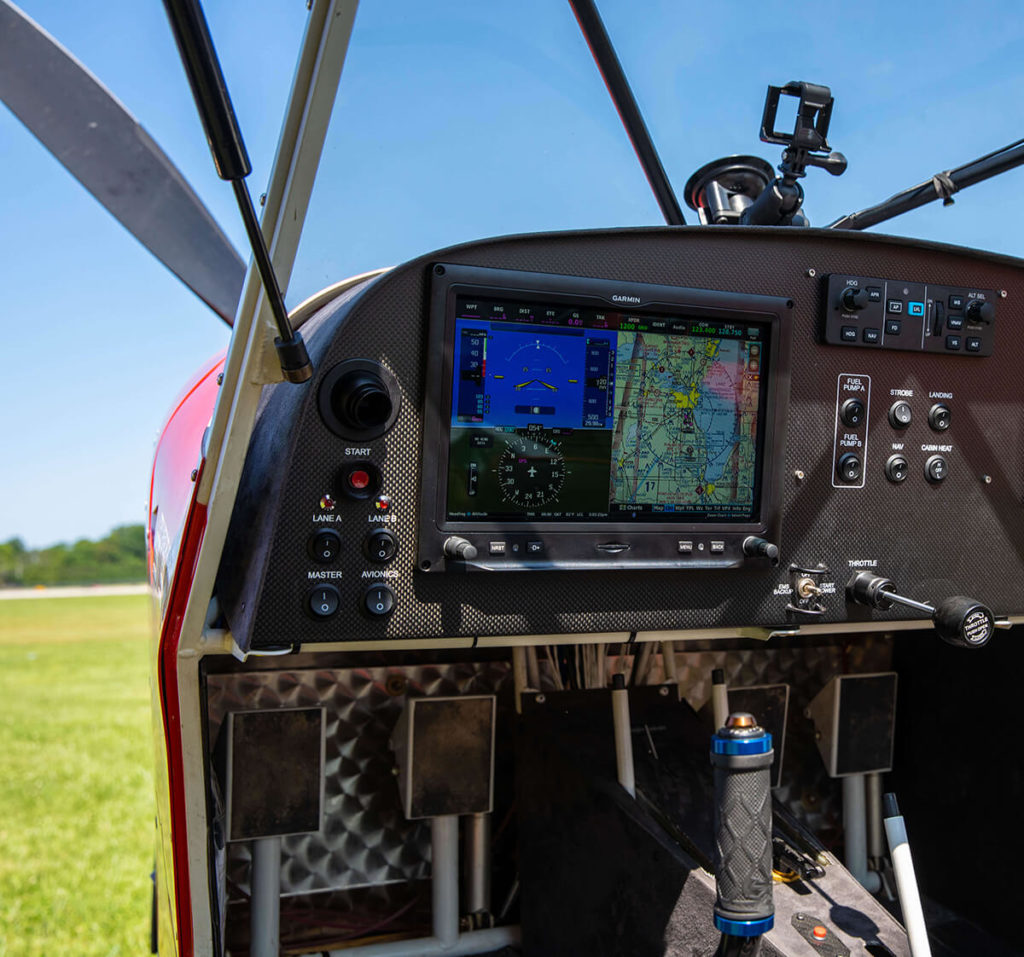
“I’ve never had an autopilot and I never thought I would like an autopilot, but having everything in one unit right in front of me is the nicest thing ever. Being able to hit the autopilot, wings level, is the best thing since sliced bread as far as I’m concerned,” he said. “I’m also running a forward-facing camera, so I’m using the external video input, and every time I’m taxiing, I’m taxiing through the G3X Touch essentially as if it was a backup camera.”
Those VIRBs attached to the FreedomFox aren’t just for
taxiing either, they’re an essential part of any video or photo production.
“On this trip I had three Garmin VIRBs; one set up as a
master, which was linked to the G3X Touch, the other ones were all slaves, so I
would trigger both videos and photos through the G3X Touch,” he added.
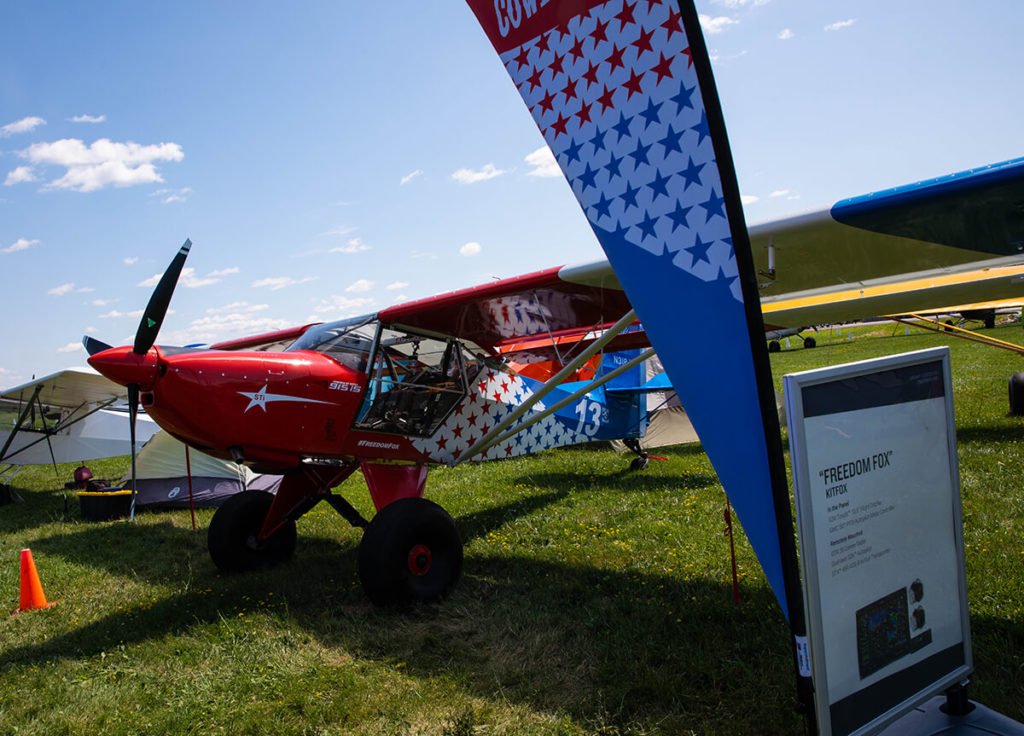
So, what’s next for Trent?
“The wife and I are working on building a house on our property that has an airstrip on it, then we have the STOL Drag Races at the Reno Air Races that I’ll be competing in. Then after that I’ve got the High Sierra Fly-In in October.”
Follow Trent and his aviation exploits throughout the year on YouTube and Instagram.
The post EAA AirVenture Oshkosh 2019 with Trent Palmer appeared first on Garmin Blog.
https://www.garmin.com/en-US/blog/aviation/eaa-airventure-oshkosh-2019-with-trent-palmer/
2018 EAA One Week Wonder, One Year Later
Building an experimental aircraft from start to finish is no easy task. Even the most seasoned aircraft builders will probably tell you depending on skillset, lifestyle and a number of factors, a build can take anywhere from a few months to several years. It’s nearly unheard of to build an airplane from start to finish in only one week. Last year, that’s exactly what the EAA and thousands of volunteers accomplished.
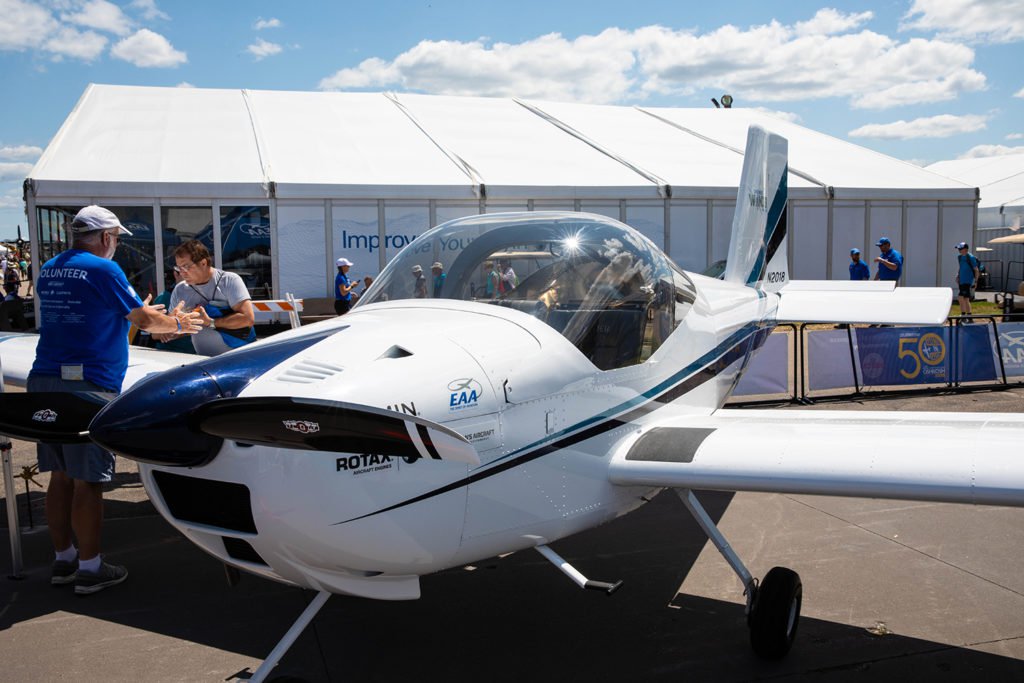
During EAA AirVenture Oshkosh 2018, 100 core builders and more than 2,500 volunteers came together to assemble sheet metal, pop rivets, wire avionics, and help complete a Van’s Aircraft RV-12iS in only seven days. Today, that very airplane has reached its one-year mark, and features an elegant paint scheme with the names of the volunteers scribed on the wings.
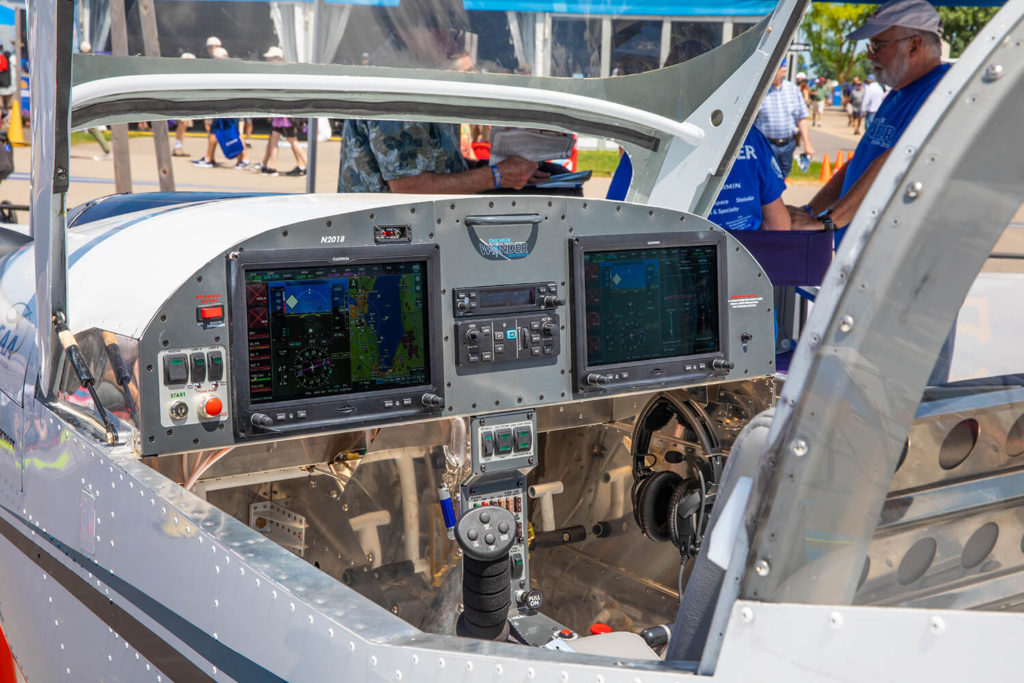
Garmin contributed dual 10.6-inch G3X Touch flight displays, a G3X autopilot, GMC 507 autopilot mode controller and a GTR 200 comm radio for the One Week Wonder RV-12iS.
Today, the airplane travels to airshows throughout the country and visits EAA chapters as an inspiration for amateur aircraft builders and aviation enthusiasts alike.
The post 2018 EAA One Week Wonder, One Year Later appeared first on Garmin Blog.
https://www.garmin.com/en-US/blog/aviation/2018-eaa-one-week-wonder-one-year-later/
Garmin Ambassador Pete McLeod: Owning, Operating and Upgrading a Cessna 414
Every aircraft owner has a unique mission. And every
airplane has an ideal role. Finding the perfect balance can help establish a
successful partnership between airplane and owner. Garmin ambassador and air
race pilot Pete McLeod understands the formula well — he owns and operates a
1977 Cessna 414. His missions vary from business to pleasure, but above all, he
loves having the opportunity to fly himself to locations all over North
America. Pete explained his process in choosing an airplane that fit his needs,
and how upgrading the vintage ’70s aircraft with modern Garmin avionics not
only expanded the capabilities of his aircraft, but also increased his
confidence when flying it.
Growing up in a land where
aviation is a necessity
In Canada not all destinations are accessible by road. Like many
remote parts of the world, general aviation is an essential part of life for
many in Canada, especially Pete.
“I grew up in a small town in Northern Canada — Red Lake, Ontario.
Although serviced by a paved road, Red Lake sits at the ‘end of the road,’ and
if you want to go any further north, or to any destination off the single road
access, an airplane was the only way,” he said. “In a location where aviation
is more necessity than luxury, flying is a way of life, and is ingrained in the
cultural fabric of the people who live and work here.”
Airplanes are a part of the fabric of life in places like
Canada. It’s just a matter of finding the right one.

Outlining a mission, identifying
an airplane
For Pete, finding the right airplane started with defining
his mission profile. He needed to determine the role an airplane would play,
how it would be helpful in his business and personal travels, and where he
would conduct his typical flights.
“My mission required a capable and reliable IFR
cross-country aircraft. Many of my flights are over remote terrain or water, so
the systems and powerplant redundancy of a multi-engine [aircraft]was a
priority,” he said.
Once his mission was established, it was time to start
looking at the market. The light twin-engine piston market satisfied Pete’s
mission profile and made a lot of economic sense.
“The systems, performance and capability of the legacy
piston-twin aircraft segment are very affordable compared to newer aircraft and
turbine variants, so the category also maximized utility within my budget,” he
said. By choosing a legacy aircraft like the Cessna 414, he combined the
benefits of a proven airframe with a cost-effective investment. “The 414 has a
great mix of speed and altitude flexibility for an aircraft of its class. It’s
comfortable for the pilot and passengers, reliable, and it offers tremendous
overall performance for the price of purchase and operation,” he added.
21st century
technology in a 20th century airframe
Improving the performance of an aircraft beyond its original
specifications is not always an easy task. Flying faster or higher can sometimes
be accomplished with airframe or powerplant modifications, but these options
aren’t always available, or don’t make economic sense. An upgrade to the
avionics, however, can increase the capabilities and sometimes offer improvements
in a few performance categories. For example, some larger aircraft can benefit
from weight savings with an avionics upgrade, allowing additional passengers or
luggage with the same fuel load.
LPV approach capability can be achieved with an avionics upgrade. By adding a modern GPS navigator — like our GTN 750/650 series — pilots can take advantage of GPS precision for instrument approaches and increase the number of IFR-accessible airports. With a modern digital engine information system, available in our TXi series flight displays, pilots can optimize in-flight engine performance and fuel consumption. Pilots and technicians can also review engine performance data to monitor the overall health of an engine.
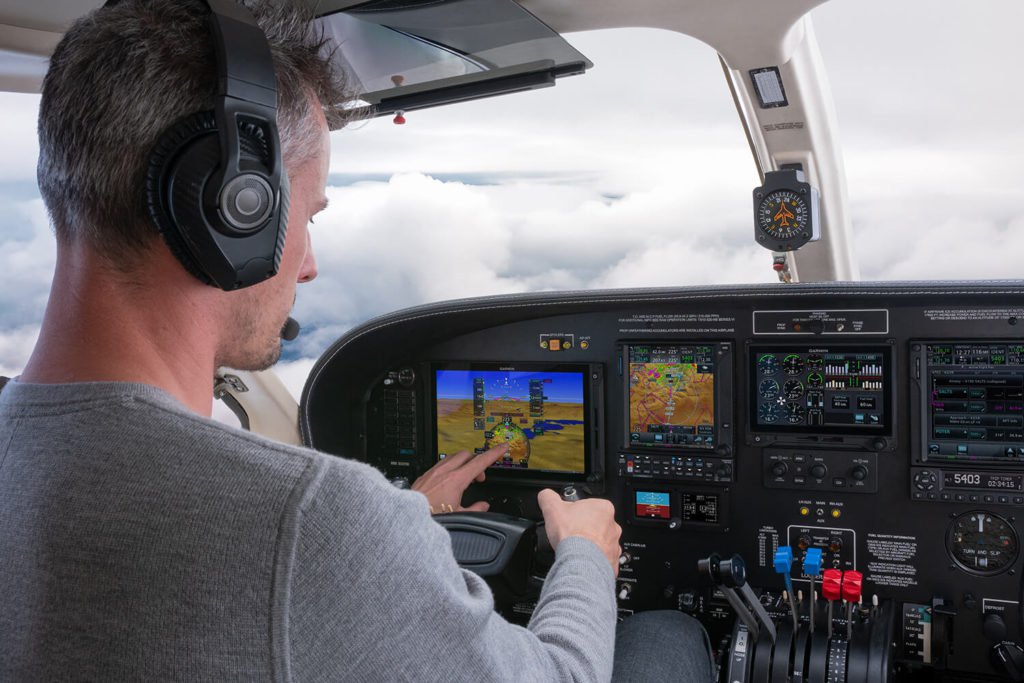
Modern avionics technology can also help improve a pilot’s
performance in the cockpit. Advanced features, wireless connectivity and intuitive
user interfaces have been designed to help reduce pilot workload and increase
situational awareness within the flight environment.
“My aircraft is relatively complex, and I fly it single
pilot IFR in and out of airports and airspace of all sizes and complexity. The
technology in my cockpit has made flying single-pilot, multi-[engine]-IFR much
more manageable, organized and predictable,” Pete said.
His Cessna 414 features G600 TXi touchscreen flight displays for primary flight displays, multifunction displays and engine information system gauges. Dual Garmin GTN 750 navigators give him GPS precision, LPV approach capability, easy-to-use comms and flight planning tools, plus additional options for viewing navaids, traffic, overlaying geo-referenced charts and more.
“It’s like having a great co-pilot on board! No longer do I
dread getting a complex clearance completely different than filed — flight plan
programing is quick and easy. Juggling weather, traffic and terrain en route —
I still rely on planning and ATC for help — but now I see everything directly
in front of me long before I even hear from ATC on the issue,” he said. “The
ability for me to competently and confidently complete a flight is the biggest
benefit I have gained from my avionics upgrade – and that makes the flying all
the more enjoyable!”
And with a Garmin GWX doppler weather radar in the nose,
real-time weather tracking and analysis displayed on the TXi and GTN 750s help increase
certainty when navigating around storm cells.
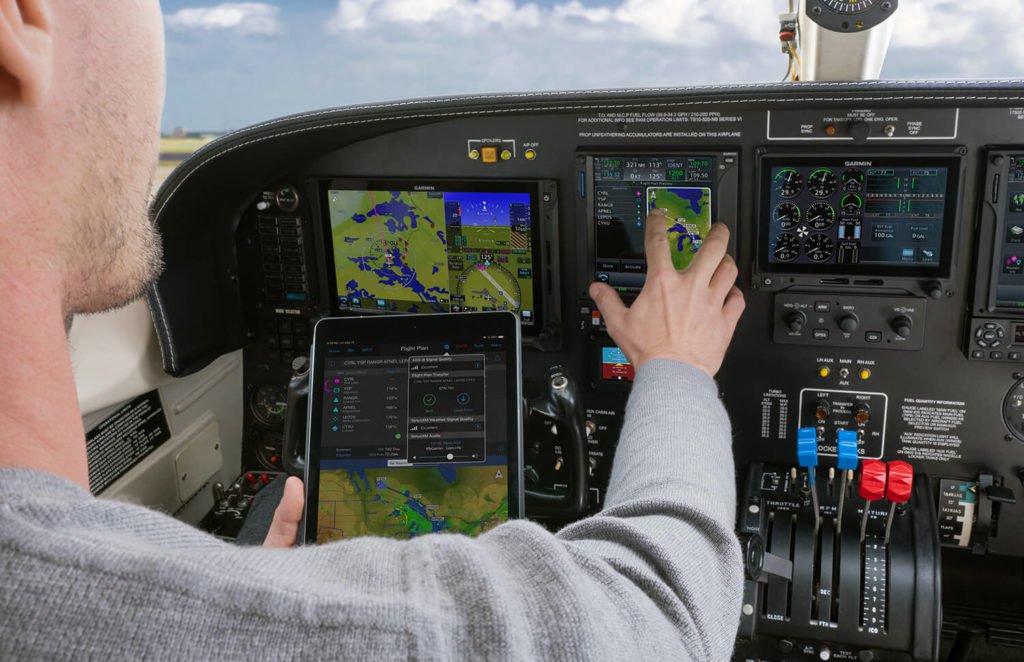
One airplane, endless
opportunities
Whether it’s a business flight or taking the family on vacation,
Pete’s Cessna 414 fulfills a number of different roles. We asked him about his
favorite flights in the airplane:
“I took my daughter for her first flight at 5 weeks old.
And, how about three friends, three deer, a truck-bed full of gear onboard and
302 knots ground speed in cruise — it was a heck of a tailwind. We spent the
day hunting, then turned what would be a 17-hour drive into a two-and-a-half-hour
flight directly home.”
Pete McLeod is a Garmin-sponsored athlete and ambassador.
For more information about the Garmin avionics he uses in his aircraft, visit garmin.com/aviation.
The post Garmin Ambassador Pete McLeod: Owning, Operating and Upgrading a Cessna 414 appeared first on Garmin Blog.
https://www.garmin.com/en-US/blog/aviation/garmin-ambassador-pete-mcleod-owning-operating-and-upgrading-a-cessna-414/
